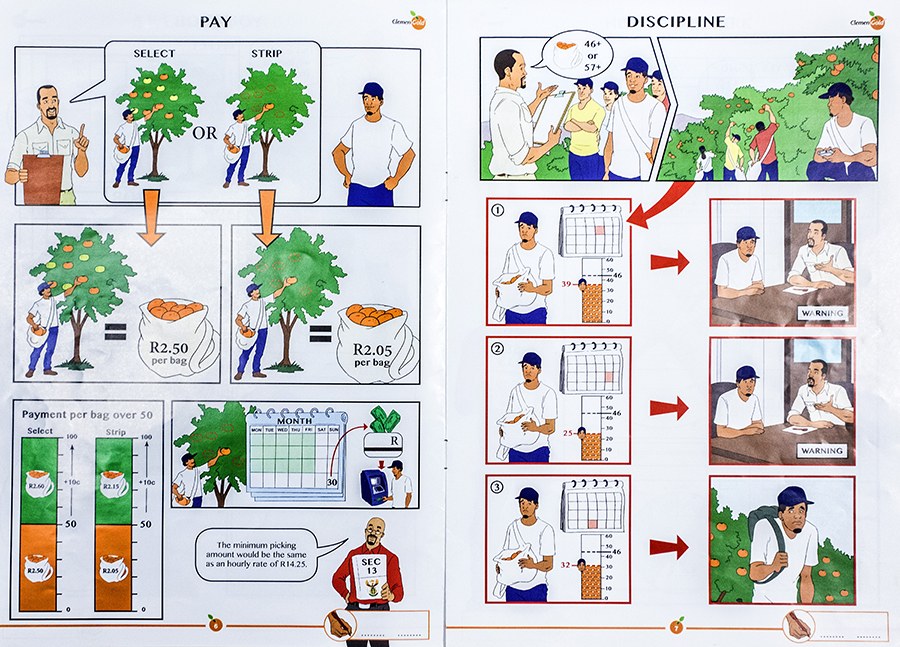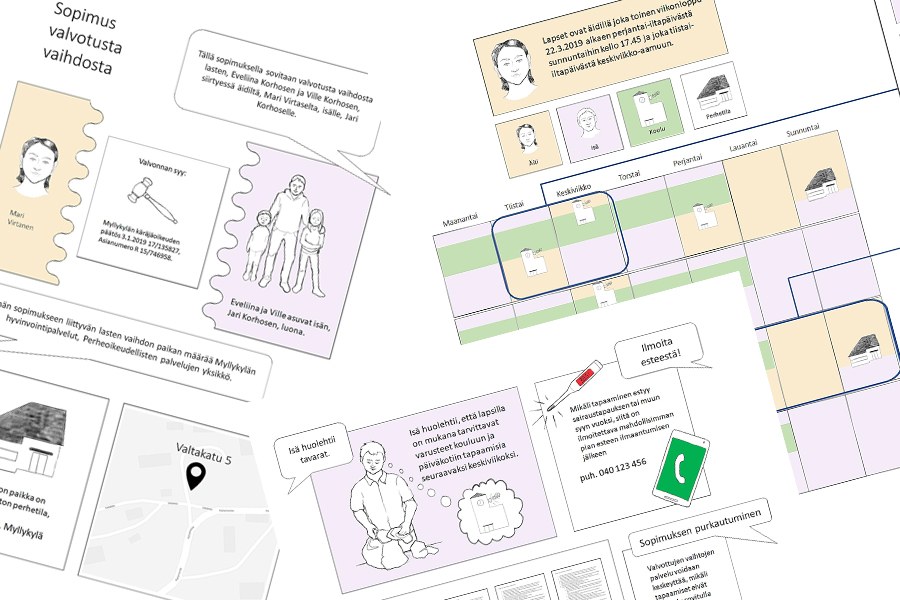A research group develops social welfare documents into comics

Laura Kalliomaa-Puha, the principal investigator of the Word to Image project and professor of social welfare law, does not see any reasons for why, for example, legally binding employment contracts could not be presented in comic-style in Finland.
“The Employment Contracts Act does not state that an employment contract should be text. However, the Act says that employment contracts should preferably be in written form, but an oral contract is also valid,” Kalliomaa-Puha says.
The project received a €296.000 grant from the Kone Foundation for a three-year project that takes a multidisciplinary look at the potential of comics to increase the comprehension of social welfare documents. The research group includes researchers from social work, law, translation studies and comic studies as well as an illustrator.
Lack of clarity stops people from exercising their rights
The research project aims to shed light on the problem of obscurity of legal documents. A part of the population is deprived of their social rights because they do not understand unclear documents, which is costly for the entire society.
According to Kalliomaa-Puha, it is hard to estimate the number of people who are deprived of their rights. However, the problem concerns most people at some stage of their lives.
“Even a researcher of social welfare legislation does not always understand social welfare documents. Many texts produced by our society are so complicated that it stops people from accessing their rights,” Kalliomaa-Puha says.

The Finnish research group follows the example of Robert de Rooy, a South African lawyer, who designed a comic-style employment contract that is legally binding in his country. Photograph: Robert de Rooy / Creative Contracts (Pty) Ltd
The research group at Tampere University got the idea for their project from the legally binding comic-style employment contracts made in South Africa and Australia.
Robert de Rooy, a South African lawyer, developed a comic-style employment contract that can be understood by people speaking different languages. Such a contract was needed because South Africa annually receives seasonal orange pickers from the neighbouring countries. Eleven languages are spoken in South Africa alone.
De Rooy has already created 20 different comic-style agreements for various purposes. He has finalised the contracts in collaboration with comic artists from the South African company Jincom.
In Australia, a comic-style employment contract was designed for an engineering firm. It resembles a comic album because it also contains much other information such as the company values.
“It is not that the engineering company suspects the employees of illiteracy. It is rather a question of how carefully they peruse the document,” Kalliomaa-Puha says.
In Finland, there have been speculations that people might find the medium of comics childish. However, such fears have not materialised in Australia and South Africa. On the contrary, user experiences have been positive and both employees and clients have appreciated the new format.
Because Finns are used to written expression in official communications, Kalliomaa-Puha is eagerly awaiting how they will receive a comic-style document.
Pilot document on the supervised exchange of children
As their pilot study, the Word to Image research group has produced a comic-style agreement of the supervised exchange of children between divorced parents. It is a service under the Social Welfare Act, in which the municipality offers a contractual arrangement for the supervised exchange of children from one parent to another when the parents cannot get along and encounter each other in person.
Anne Ketola, a member of the research group, is also an illustrator who drew the pictures for the pilot document. The document was tested by social work students who compared the graphic document with the document used by the City of Tampere.
Half of the test readers said that the pictorial version was clearer while the other half preferred the written version. Some of the test readers were concerned that the clients might find the comic-style document patronising. This question will also be tested by real clients later.

As their pilot case, the Words to Image project chose a document that describes the supervised exchange of children from one parent to another. The picture depicts Anne Ketola’s illustrations for the document.
Ketola found drawing the document very interesting. One problem was to illustrate things that do not appear in the textual presentation.
An illustrator must take a stand on people’s appearance. Ketola chose to depict a native Finnish-looking couple in traditional gender roles.
“In this kind of an agreement, it is justified to have a mother and father and traditional gender roles. Other types of documents should attempt to avoid such stereotypes,” Ketola says.
The question of representation is essential since one group reading such documents are immigrants who are not yet fluent in Finnish or Swedish.
Colours are also problematic. Ketola used green and red to symbolise right and wrong, but feedback revealed that the choice is not suitable for people with colour blindness.
“There are so many things that must be taken into account, which makes the work interesting but also challenging,” Ketola says.
Eliisa Pitkäsalo, a translation studies scholar, notes that a text-based agreement may present the issues in a different order than a comic, but both formats should ensure that the logic of the document is preserved.
The elderly as a user group
A diverse range of people could benefit from comic-style documents. One group is elderly people with memory loss or cognitive problems that hinder comprehension.
“The comic style is also useful for the elderly because it may be easier to remember things visually. When you see the contents of a document, they are easier to remember,” Pitkäsalo points out.
According to Pitkäsalo, a contract for home care services could be one suitable document for a comic-style presentation.
Vaula Haavisto, a member of the research group, will conduct a preliminary study on the type of documents that could be suited for comic-style presentation. She has plans to map the needs of immigrants via refugee counselling services and other organisations in the field.
Haavisto is interested in how people use contracts and how the use potentially changes if the contract is a cartoon. Social work researcher Kirsi Günther explores how comic-style documents improve customer orientation as well as the ethics of record-keeping practices in social services.
A radical attempt to illustrate an entire document
In Finland, the comic style has been used as a means of communication in public administration. At least the annual report of the City of Kemi and the history of the Social Insurance Institution Kela have been published as a comic. The European Union has published a guideline on data security as a comic.
Tampere University’s project goes beyond mere illustration. Until now, pictures have been a bonus with the purpose of illustrating a section or legislation.
“Our project is quite radical because we aim to illustrate the entire document instead of publishing the pictorial elements as some sort of an attachment. However, the illustrations might still work better as an attachment or additional material, and this is also a possible outcome of our research,” says Kalliomaa-Puha.
The researchers think that illustrating the documents allows them to learn many things from the documents themselves.
“Another possible result would be to learn how the existing documents could be improved as texts,” she adds.
Text: Heikki Laurinolli





